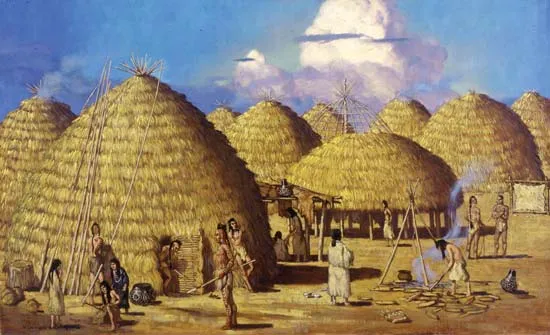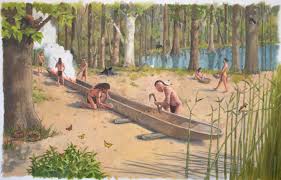A Teacher's Guide to Exploring the History and Culture of Native Americans in Texas
- Kim White
- Jun 30
- 3 min read
Updated: Aug 1
It's time to take the "ugh" out of Social Studies. Students love learning about history when it is told as a story. They love connecting to the past, but fourth graders are unlikely to connect with history through a lecture or just reading informational texts. Students need to connect with the topic, discuss it, read about it, and write about it.

You can show students some images to help them connect with what they’re learning. Ask them to take a good look and share what they notice—what stands out, what they think is happening, or how the people are working together as a community. This type of visual brainstorming is an easy and engaging way to spark conversation and get everyone involved. Just be sure to mention that most of these images are artistic recreations, not actual photos, so they’re someone’s interpretation of what things might have looked like.
You can use non-fiction books to build background knowledge, enhancing students' understanding and appreciation of Texas Native Americans. I like to use these books as read-alouds or provide several copies of each book for students to choose from and form their own groups.
Click the images to access an Amazon link for each book.
Use Maps
Maps are a great tool for helping students gather and understand information in a way that’s visual, organized, and a little more fun than just reading from a textbook. When I’m teaching social studies, I like to kick things off with a map of Texas that shows the different areas where various Native American groups lived. It gives students a clear picture of where tribes were located across the state and helps them start to make connections between geography and how people lived. It’s a simple but powerful way to set the stage for deeper learning.
Informational Text
Try weaving your Social Studies content right into your reading block—it’s a great way to make the most of your time and help students see how subjects connect. Once you've built a visual background of Native American history or Texas tribes, they’ll find it easier to picture what they're reading and really engage with the text. To keep them focused and thinking deeply, use tools like comprehension questions, anchor charts, and graphic organizers. These strategies help students break down what they’re learning, organize their thoughts, and stay accountable as they read.

Graphic Organizers and Posters
Graphic organizers are the best way for students to organize their thinking and integrate what they've learned. I like using graphic organizers as a formative assessment, but I also love using "posters" to give students artistic freedom to show what they've learned. Let's face it, by fourth grade, they rarely get the chance to draw or color, so they absolutely LOVE it when the opportunity arises.



Legends and Stories
Reading Native American legends and stories is a great way for students to get a feel for what life was like and what really mattered to different tribes across Texas. These traditional tales often reflect the values, beliefs, and priorities of Native communities, like their respect for nature, the importance of family, or the lessons they passed down through generations. The stories help paint a fuller picture of their way of life in a way that’s engaging and meaningful for students.
Hopefully, some of these ideas will help bring new energy and excitement to your Texas Social Studies curriculum! When students can interact with maps, stories, visuals, and hands-on activities, they tend to connect more deeply with the material, and that makes teaching way more fun, too.
Curious to dive deeper into Native American groups from Texas? There's a lot to explore! From the nomadic Comanche and Apache, to the farming Caddo, and coastal Karankawa, each group had its own way of life, traditions, and relationship with the land. Whether you're looking for books, legends, art projects, or region-based lessons, there's plenty more to uncover. Let me know what kind of resources or ideas you’re looking for—I’d be happy to help!
















